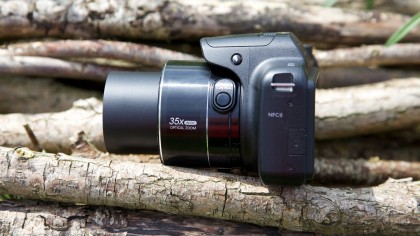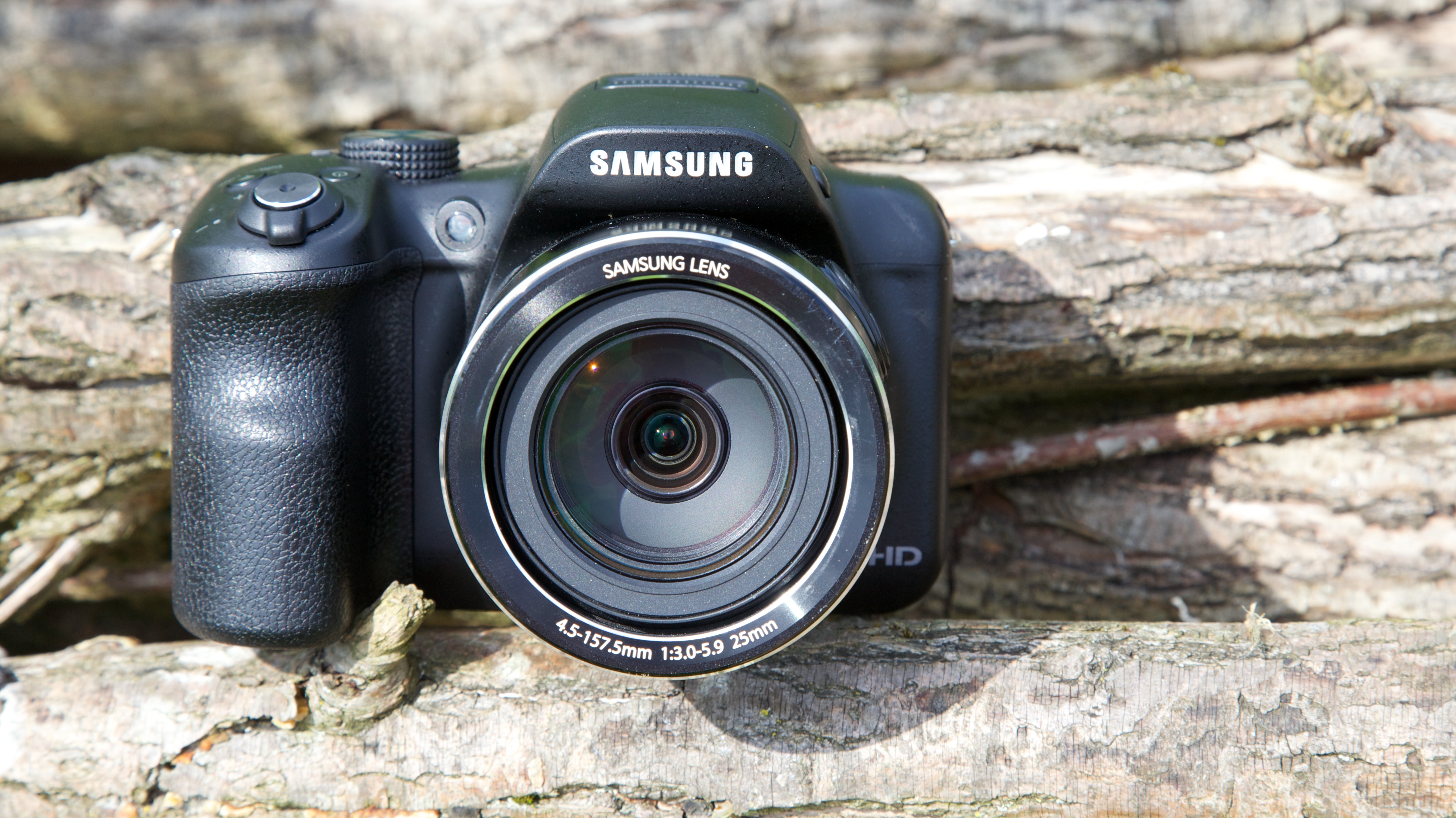Why you can trust TechRadar
Performance
A weekend spent testing the camera on a variety of moving and non-moving subjects threw up no issues with metering, exposure or colour balance – P mode allows exposure compensation for those tricky compositions – but did uncover the flaws in the autofocus system.
With no way of telling you if you're within the minimum focus distance, which is as far as three and a half metres at the long end of the zoom and in Normal AF mode, the camera sometimes won't focus, which is fair enough, but other times reported a false focus lock for an image that was clearly still blurred on the screen. Auto Macro mode, which is an option in P and seems to be on by default in Auto, solves the distance problem, but not the false positives.
When on the cusp of its minimum focus distance, the camera also reported a red rectangle for no focus lock for images that, on later inspection, were in focus. It may be, however, that the subject was simply within the depth of field created by a small sensor and a short focal length.

The OIS can hold the lens reasonably steady at full zoom, but still expect a bit of wandering around. Something solid to rest the camera on will help immensely here – holding the camera away from your body to compose via the screen is never the most stable position.
The lens doesn't seem inclined to flare, even when shooting toward the sun, and the blue skies of a summer's afternoon were captured in accurate colours without too much cyan.

Those summer days uncover another flaw in the WB1100F, however: its screen. Any degree of sunlight renders the image hard to see, and while changing it to the Bright setting from its default Auto helps, it does nothing to cut down on the reflections that blight the image or increase the poor viewing angle.
Turning the brightness up will eat into the battery life too. With the screen on Auto a battery that showed as fully charged (the indicator only has three divisions) was flashing red by mid-afternoon on a day out, after nearly 200 photos and a little light Wi-Fi.
Sign up for breaking news, reviews, opinion, top tech deals, and more.
Image quality
Images are fairly sharp across the frame, but achieve their peak level of detail in the centre, as is common. High contrast scenes don't exhibit much in the way of chromatic aberration, and while there is distortion from using the wide end of the lens, it's nicely controlled and nothing to get worked up about.
Colours direct from the camera seem a tiny bit flat, but with the built in editing functions this is something that can be easily addressed. Alternatively, the file can be transferred to a smartphone for brightening up.
Inspecting an image at 100% reveals smoothing, and noise naturally begins to creep in at higher ISOs. There's almost none of the colour speckling in dark areas that you often see, rather the images take on a grainy quality that's less offensive to the eye but still serves to obliterate detail form ISO 800 and up to the 3200 maximum.
Setting the camera to ISO 3200 also drops the image resolution to three megapixels, anything higher vanishing from the menu. Drop back to a lower sensitivity setting, and the image size doesn't automatically go back up again – something that may catch people out.
Smart features
Establishing an NFC connection to launch the Samsung Smart Camera app on a smartphone (we used an Android model) takes a few seconds, and the remote viewfinder app connects easily. The view on the phone screen seems to lag about a second behind the movements of the camera, but the + and - zoom buttons on-screen move the lens as you'd expect (albeit as a series of jerks rather than smoothly). Capturing a photo takes slightly longer using the app, as a tap of the on-screen shutter button triggers focusing, then takes the pic.

To transfer an image to a smartphone, you display it in the camera's playback mode, then bump the phone and camera together, letting NFC and Wi-Fi do their stuff. The file transfers in less than ten seconds, and appears in a Gallery folder called MobileLink (on Android) from where it can be edited or shared as if it were an image taken with the phone's camera.
Direct from the camera, you have fewer options. You can share to Facebook, Picasa, Dropbox or by email. Dropbox sharing asks you to input words from a captcha that doesn't appear – something that needs to be fixed – but the others seem to work just fine. Why no Flickr or Twitter, though?
Verdict
The camera that does everything is a lovely idea, and Samsung is well on the road to getting it right. This isn't it, though, as while it's great to see so many features packed into a relatively small camera body that's reasonably priced for what you get, the unreliable AF and lack of anything more complicated than P mode are a bit of a turnoff.
Battery life isn't amazing either, a victim of the limited space inside the camera body, but that body is nice to hold, balances well in the hand and isn't as massive as it could have been, given what's packed within.
Some of the features are great. Wi-Fi in cameras is becoming standard, but the ease with which the WB1100F establishes a link with its companion app through NFC marks it out from the crowd.
We liked
The size, handling and feature packed nature of the camera. The speed with which it connects to the companion app and the wireless features in general are great to work with, and the image quality really isn't bad, with its absence of colour noise.
We disliked
The AF system. Misses, false positives and a minimum focus distance that balloons to 3.5 metres as you zoom didn't endear it to us. The screen is also hard to see in sunlight, and the battery life could be better.
Final verdict
Samsung has done well cramming this many features into a camera body. It's not compact, but will fit in a bag or outside coat pocket, and the 35x zoom means you can easily frame your subject whether you're close by or not. Focus (and, really, watch out for the AF) and shoot, then either edit and share directly from the camera or transfer it to your smartphone. It's an attractive proposition, and one that will become a more solid reality in the near future, but we're not quite there yet.
